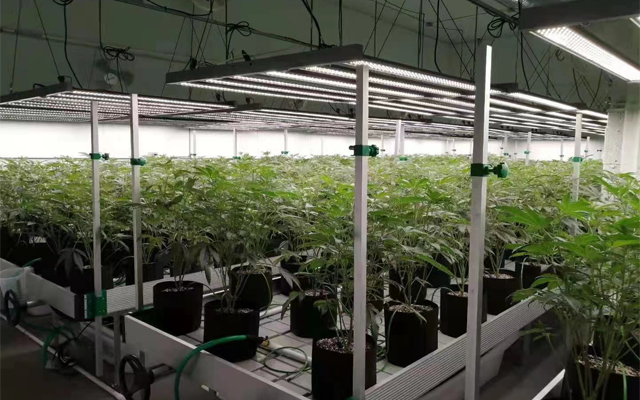The cannabis industry has been making headlines for some time now – but truth of the matter is, it is an industry in its infancy. Every year, new states are passing some form of legalization, whether medical or recreational. Currently, there are 37 states with some form of legalization. With new industries comes the expected growing pains. There are gaps when it comes to industry-wide standards that need to be explored and improved upon.
According to recent data, in 2020, cannabis sales hit $20 billion and are targeted to top $26 billion in 2022. Experts project sales to jump an additional 76% by 2025, putting the cannabis industry close to $46 billion. With such incredible growth potential, industry professionals, including growers, suppliers and manufacturers, need to consider third-party validation to improve upon current industry standards.
Grow lighting is expanding rapidly within the cannabis industry. The cannabis lighting market is expected to grow at a compound annual growth rate (CAGR) of 8% from 2021-2026. Being one of the most crucial elements to growing cannabis, the quality of lighting can have a direct effect on the quality of cannabis. Ensuring growers have the best lighting options can help them reach a higher yield by growing more quality plants and spending less money.
While there are many grow light companies floating around the industry, growers do not truly have a sense of comparison when it comes to price, quality and effectiveness. Because of this, third-party validation is an important exercise for companies to take part in. By having a set of non-biased product data, growers can make informed decisions when it comes to their specific needs.
Below are specific data points that grow light companies should be testing for:
Electrical
- Voltage
- Current
- Power
- Power Factor
- Current THD
Radiometric and Quantum
- Total Radiant Flux
- Radiant Efficiency
- Total Photon Flux
- Photon Flux Efficacy
Horticultural
- PPF
- PPE
- Far-Red Photon Flux
- PPFD Conversion Factor
Beyond these key metrics, which need to be validated by a third-party test lab, the quality of the components used in the grow light fixture are also equally important for the life of the fixture. Tier one LED diodes, drivers, and the proper heat sink all contribute to the quality of light and longevity of performance. As competition has heated up in the LED grow light space, several players, including the big brands, are finding ways to lower their pricing to be more competitive, but unfortunately, at the expense of quality. Because of this, growers are ultimately paying the price by buying inferior grow lights. It is critical for growers to research and make an informed decision when buying LED grow lights.
In summary, grow lighting options are certainly not a one-size-fits-all solution depending on the size of the grow room, the growth stage, location and many more factors. While there are many variables for growers to consider, grow light standards formed by third-party testing and validation will need to continue to evolve as the industry keeps expanding.






